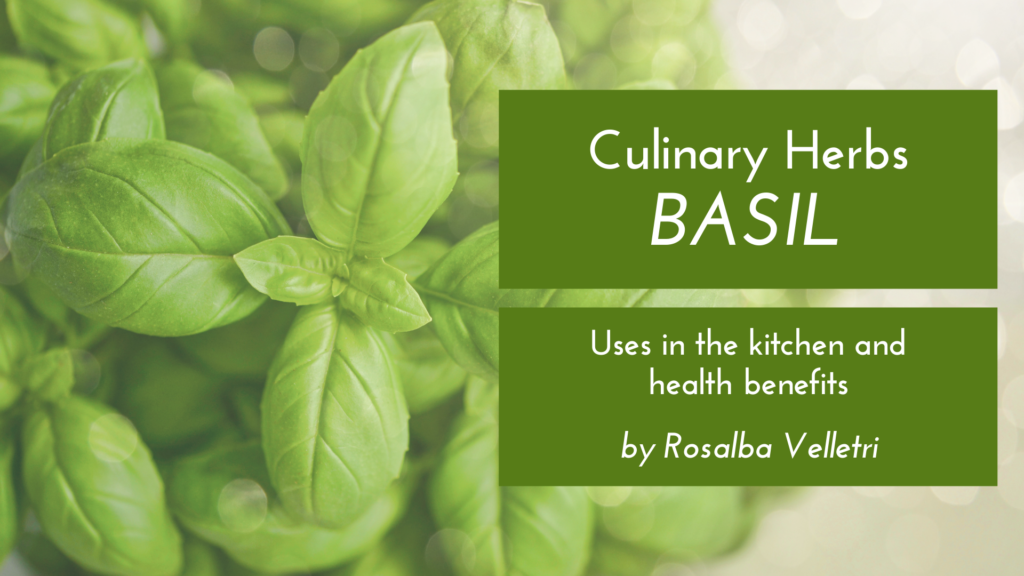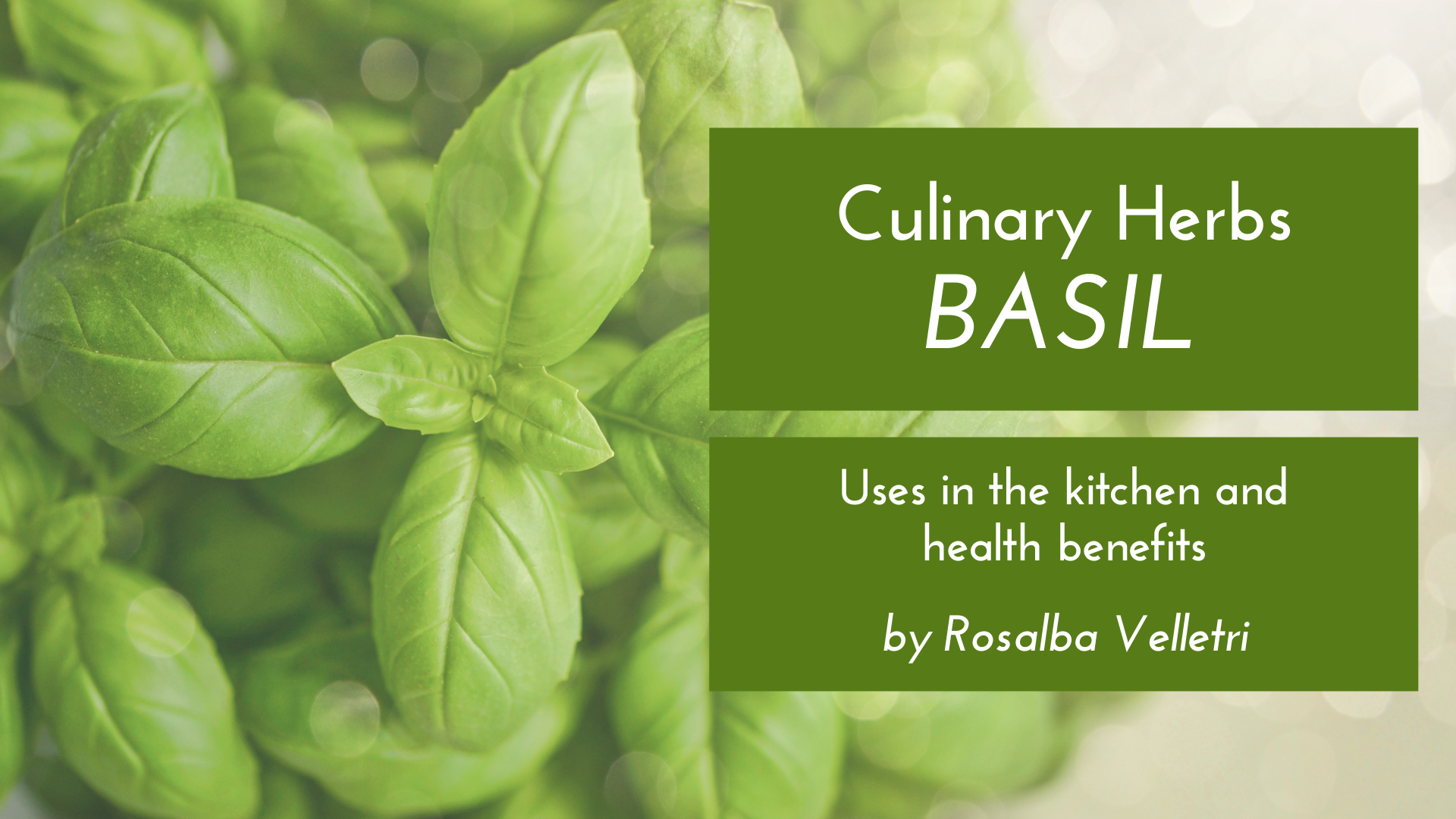Uses in the Kitchen and Health Benefits by Rosalba Velletri
Culinary herbs and spices have been used since ancient times, widely used in cooking to add flavour and as garnishing, they are an essential ingredient in every type of international cuisine. Initially collected in the wild for their therapeutic properties as well as for cooking, they have gradually been domesticated and are now commonly cultivated in garden beds and containers and are found in nearly every household.
Summer gives us a variety of fresh herbs that are ideal to cool us down with their refreshing flavours. Some culinary herbs that we find in summer are basil, mint, sage and oregano.
The smell of basil for me brings back memories of long summer days at the beach, with fresh tomato, mozzarella and basil panini for lunch, and family days making tomato passata.
BASIL

It’s an annual plant that can grow up to 60cm. The plant has pointed, oval shaped leaves and small white flowers. There are different varieties of basil with the colour that can range from light green to green/purple according to the species.
It is easy to grow in a garden bed or in a pot, in a well-lit position, in soil with good drainage. It needs to be watered regularly but not excessively, some pea straw can be used at the base of the plant to retain moisture, especially during the warmer months.
It is better to collect the basil leaves in the morning, as they seem to have a higher concentration of essential oils. They don’t need to be cut with a knife but just picked by hand in small branches, not individual leaves; pinching the basil tips will encourage new growth.
The leaves contain essential oils that give the basil the characteristic pungent aroma. It is more beneficial when just picked and added to the cooking at the very end because it retains its organoleptic properties. It adds flavour to summer dishes like fresh tomato pasta sauce, green salads, tomato salads and is the main ingredient of the ‘Pesto alla Genovese’.
Basil can be preserved to be used during the colder months; just wipe the leaves with a clean tea towel, place them in layers in a container and keep in the freezer. It can also be blended with some extra virgin olive oil and placed in an ice tray in the freezer, this way is easy to add one or two basil ice cubes to the cooking.
As well as an excellent culinary herb basil can aid digestion and relieve headaches and tiredness; it is antispasmodic and antiseptic, anti-inflammatory and antioxidant; it contains magnesium, potassium, calcium and phosphorous, iron, some B vitamins, Vit C, E and K.

